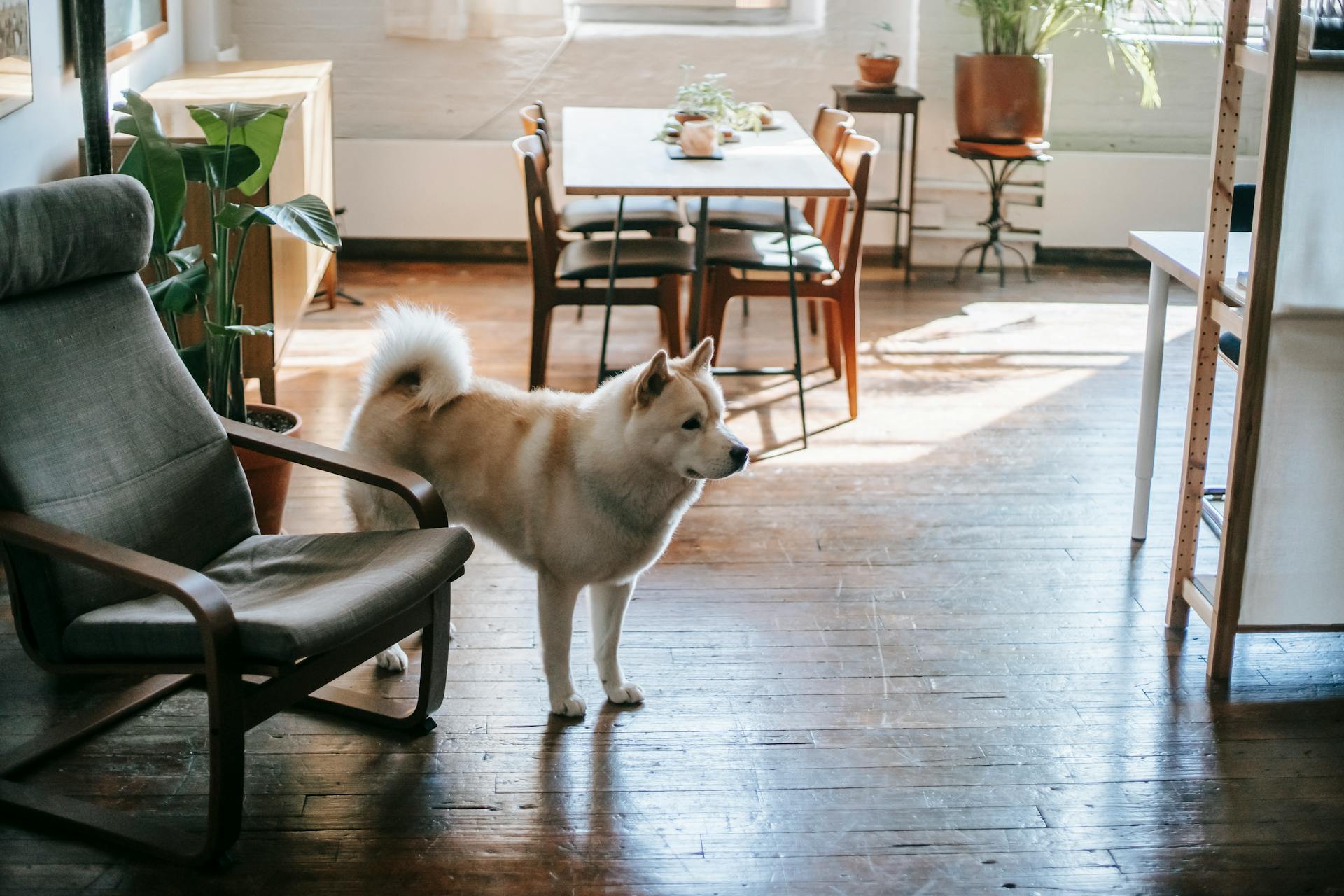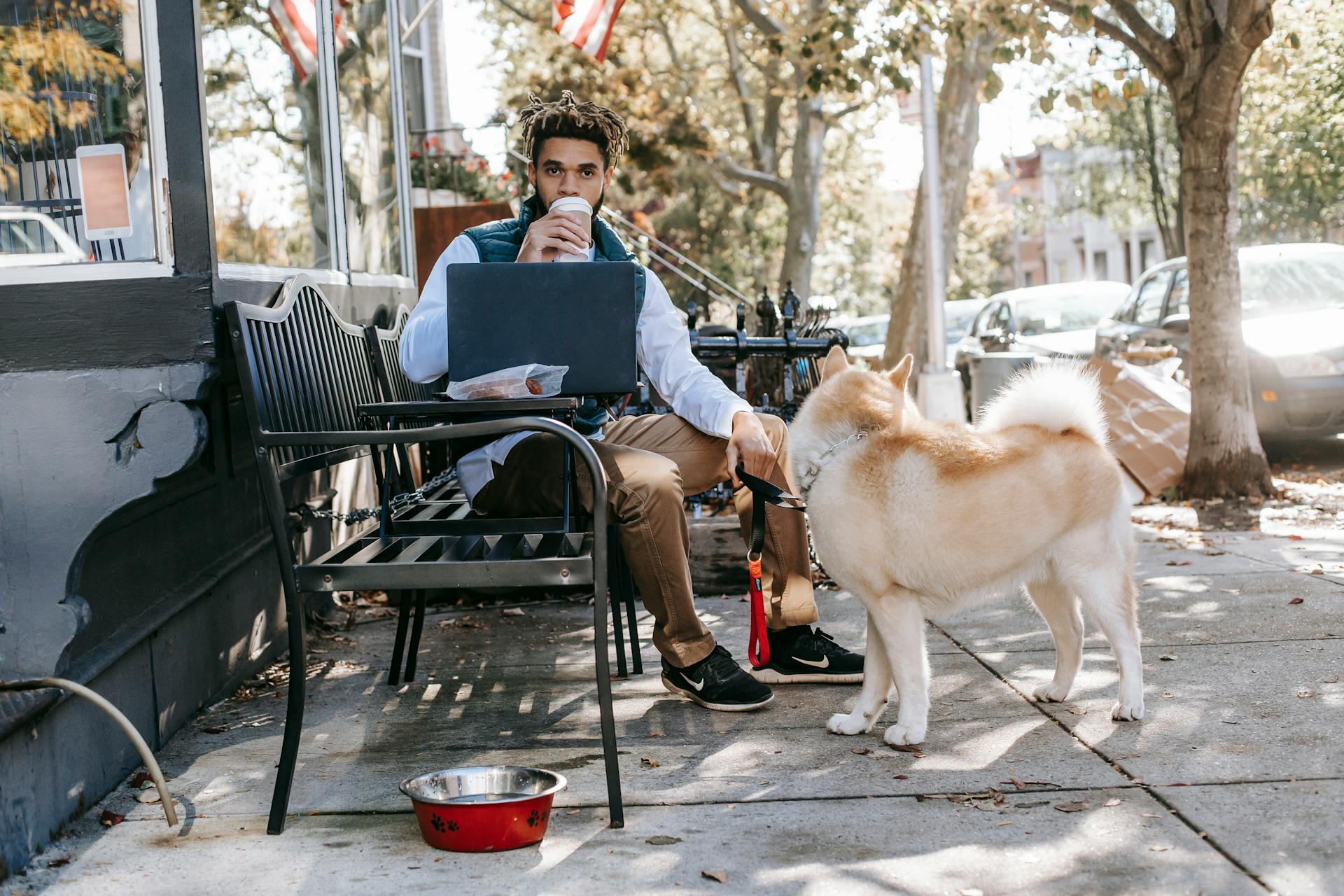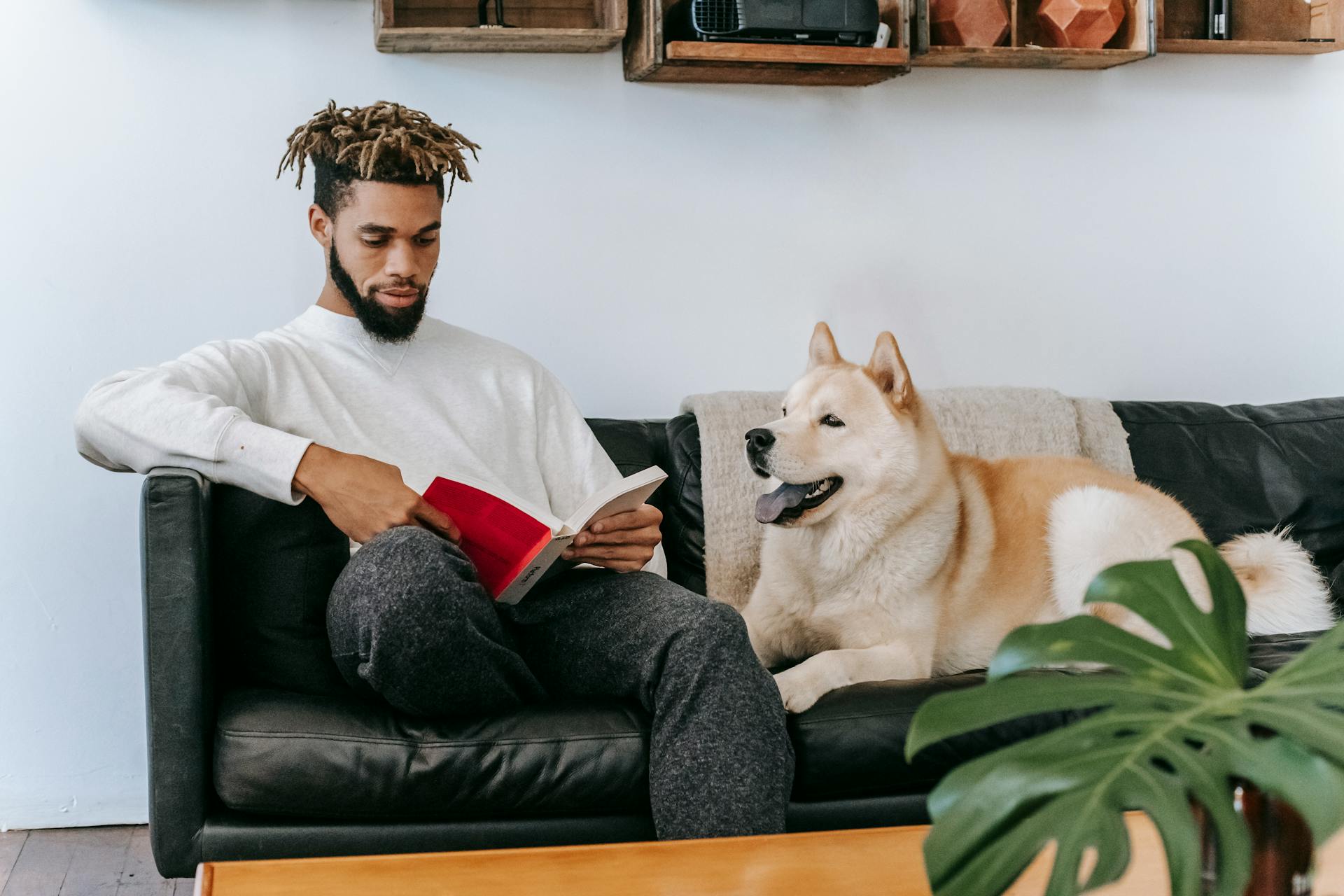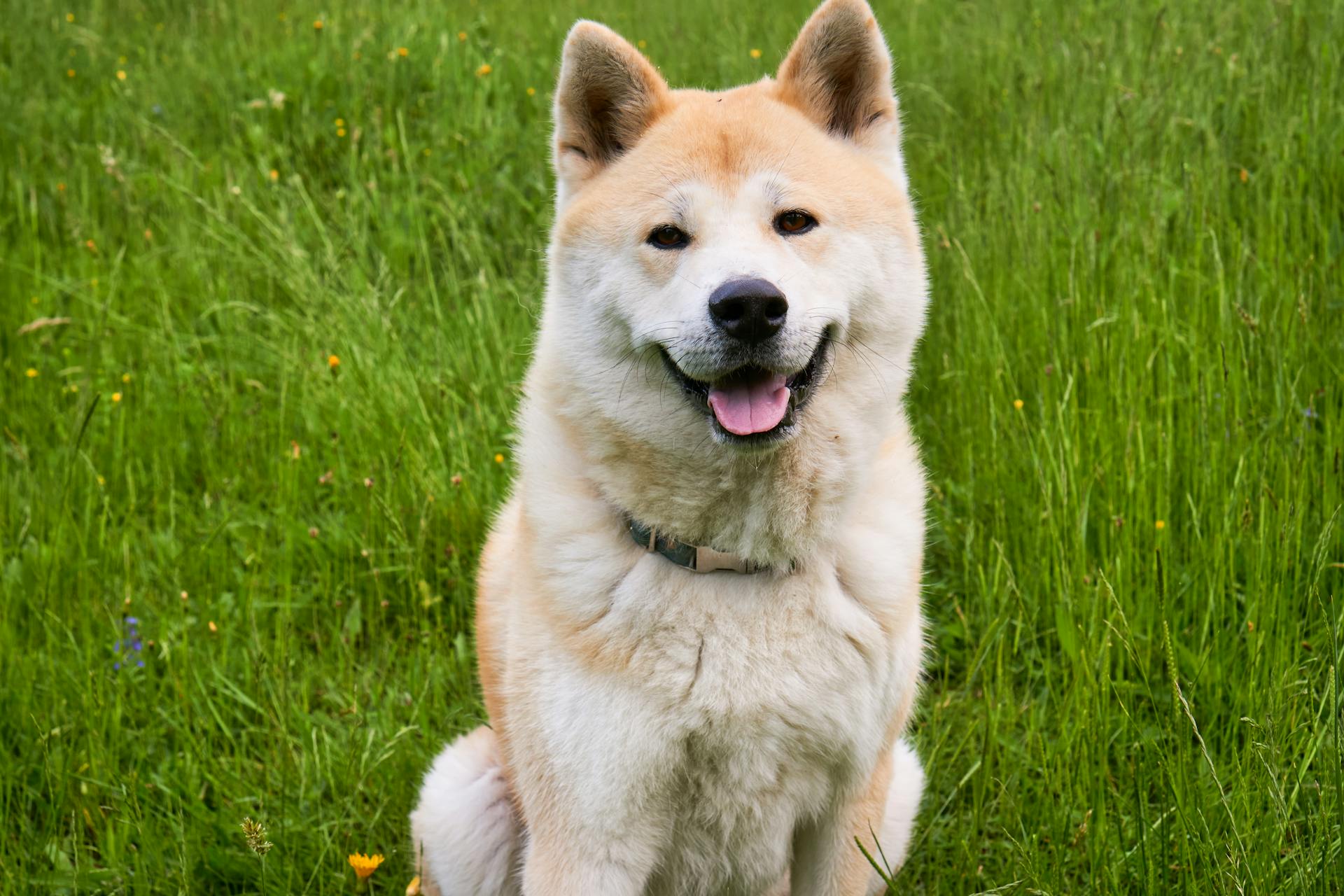
The Red Akita is a stunning dog breed that's steeped in history and tradition. Originating from Japan, this breed has been around for centuries.
In the late 19th century, the Akita was first bred to hunt large game like bear and deer. This is where their strong prey drive and endurance come from.
With their thick double coats, Red Akitas are well-suited to cold climates. They're also known for their loyalty and protective nature towards their families.
You might enjoy: Akita Dog Breed Puppy
Breed History
The Akita breed has a rich and fascinating history. The breed was named for the province of Akita in northern Japan, its region of origin.
In Japan, the Akita was used for hunting and guarding royalty as far back as the 1600s. This noble purpose earned the breed a special place in the hearts of the Japanese people, who believe that Akitas represent good luck and health.
The breed was declared a Natural Monument in Japan in 1931, and a breed standard was established three years later.
Additional reading: Shiba Ken Japan
The Inu
The Inu is a distinctive part of the Akita breed, and one of the most well-known Japanese Akita Inu coat colors is red, or aka as it is known in Japanese.
Red Akita Inus express a clear sable pattern with a rich and vivid red phaeomelanin intensity.
Akita Inus with a red fawn coat can never have any black shading.
Red Akita Inus have to have countershading, also known as urajiro, which refers to cream or white Akita markings on the underside of the dog and the lower body.
All red Japanese Akita dogs should have a white tip on their well-curled tail.
The term urajiro is often used alongside omotejiro, which means front white in Japanese and describes white or cream countershading found on the sides of the muzzle and the cheeks of the dog.
Red fawn Akita pups may have some extent of white markings from Piebald, but these markings can often go unnoticed due to the urajiro pattern.
Some red dogs show apparent signs of the piebald pattern, like a white collar, a big white chest patch, solid white legs, or a white blaze that reaches past the ears.
Brindle Inu
The Brindle Inu is a stunning variation of the Japanese Akita Inu breed. This pattern features clearly defined black lines or stripes laid over a light base color.
From a genetic standpoint, the Brindle Inu's coat is red sable with brindle stripes, which must be uniform without any gaps. The brindle pattern covers most of the countershading, making the urajiro shading almost invisible on Brindle Akita pups.
Akita Inu dogs with a Brindle pattern can come with dense to moderate lining and have any base shade between red and silver-white. A Brindle Inu with a red base color and silver brindle can look gorgeous, with the light pigment combined with black eumelanin from the brindle pattern often looking greyish.
The Brindle Inu has a unique naming convention, with breed enthusiasts distinguishing between different patterns:
- kurotora (meaning black brindle) in dogs with a large number of black colors in their striping patterns
- akatora (meaning red brindle) on a noticeable red base color of differing shades
- shimofuri (meaning silver brindle) on a cream to silver-greyish sable base coat color
Note that a silver brindle Akita Inu may have some red or yellow shading, even if it's not very intense.
Physical Characteristics
Red Akitas are large, sturdy, and powerful dogs, with males averaging 110 pounds in weight.
Their bodies are muscular and slightly longer than they're tall, with broad chests and necks. Their legs are straight and strong.
Akitas have a thick and soft undercoat, which makes them well suited to colder climates. Their coat is short to medium in length and quite dense.
Here's a list of the different colors of the Akita breed, including red:
- Black
- Fawn
- White
- Red
- Brown
- Brown Brindle
- Red Brindle
- Fawn Brindle
- Black, Brown Undercoat
- Black, Silver Undercoat
- Black, Red Undercoat
- Black, Fawn Undercoat
- Brown, Black Overlay
- Fawn, Black Overlay
- Red, Black Overlay
- Silver, Black Overlay
- White, Red Shading
- Silver
- Black Brindle
- Silver Brindle
Physical Appearance
Akitas are large, sturdy, and powerful dogs. Their average weight is around 110 pounds for males and 80 pounds for females.
Their bodies are muscular and slightly longer than they're tall, with straight and strong legs. Akitas have broad chests and necks, as well as large heads with short muzzles.
The tail is full and curled over the body. Their ears are erect, and their eyes are small but intelligent.
Akitas have a short to medium-length coat that's quite dense. The coat has a thick and soft undercoat, making them well-suited to colder climates.
Here are the recognized coat colors for Akitas:
- Black
- Fawn
- White
- Red
- Brown
- Brown Brindle
- Red Brindle
- Fawn Brindle
- Black, Brown Undercoat
- Black, Silver Undercoat
- Black, Red Undercoat
- Black, Fawn Undercoat
- Brown, Black Overlay
- Fawn, Black Overlay
- Red, Black Overlay
- Silver, Black Overlay
- White, Red Shading
- Silver
- Black Brindle
- Silver Brindle
Some Akitas have a mask on their face, highlighting their intelligent eyes.
Patterns
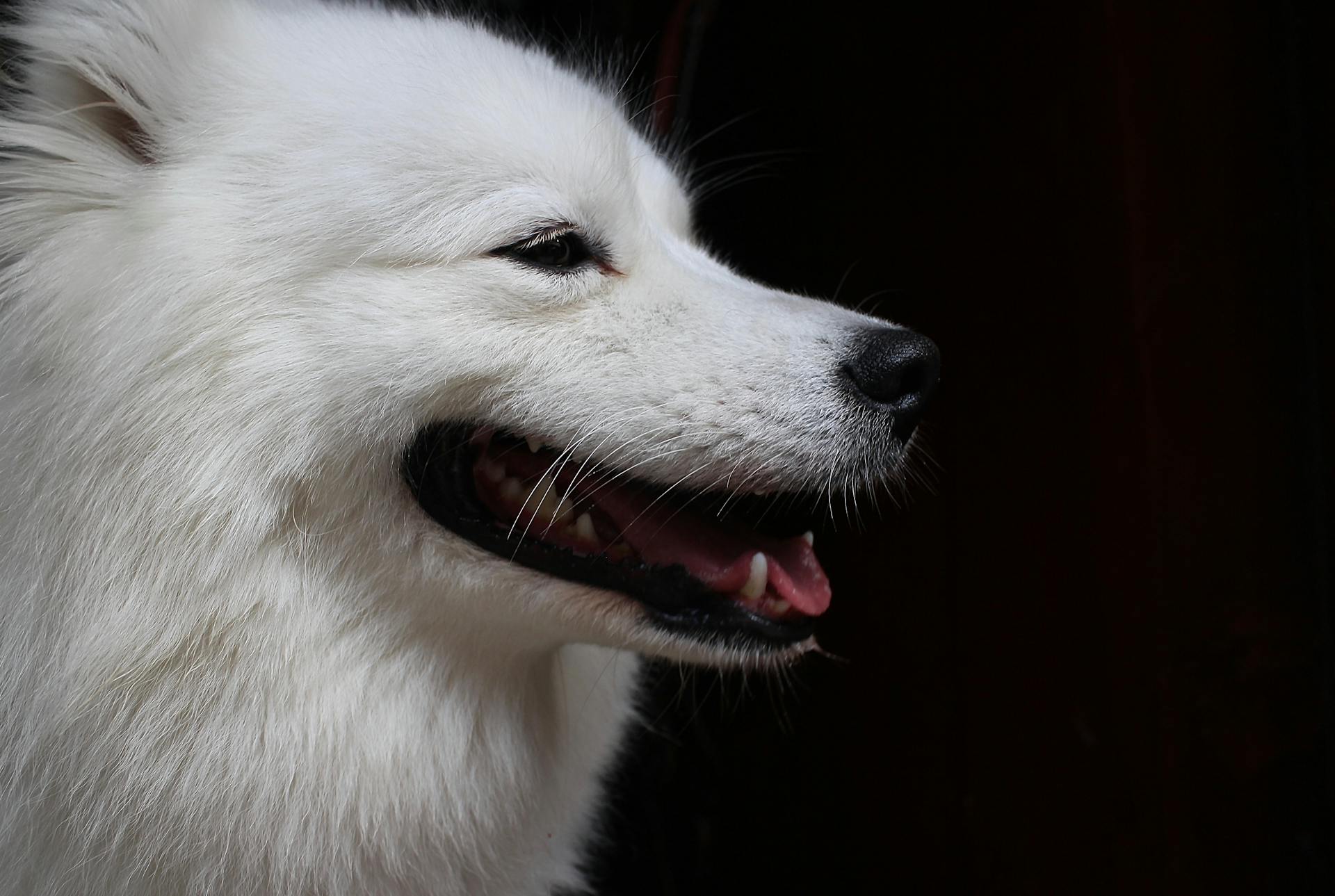
Patterns can be a fascinating aspect of a dog's coat, but they can also be tricky to understand.
Breed standards often use breed-specific and purely descriptive terms to characterize the distribution of colors in a dog's coat.
Canines can be solid-colored or have a pattern with additional colors, as seen in some breeds.
The same term is used for colors caused by different genes, making translation into universal genetic terms a challenge.
Genetically similar phenotypes have many different names, highlighting the complexity of color patterns in dogs.
Broaden your view: Why Does My Dog's Red Rocket Come Out When Pooping?
Temperament and Personality
The Akita's temperament is reserved, although these dogs tend to be very affectionate and loyal to their owners.
Akitas are generally not open to playing, especially with toys or food, which can make them quite possessive.
They can be aggressive toward other dogs, especially those of the same sex, which makes owners need to be especially cautious in canine interactions.
With proper socialization, Akitas can learn to tolerate other animals, but they may still be suspicious of strangers.
Broaden your view: Shiba Inu Owner
Akitas are calm dogs, not excessively playful as adults, except when alone with their family.
Their strong-willed nature can make them challenging to train, but they are not always eager to perform, which can make training a bit easier.
The breed's independence and strength combine to make Akitas challenging for children or the elderly to manage.
Akitas can be overly protective and may misinterpret some innocent actions as threats, making them a great watchdog but also requiring careful handling.
Despite their potential challenges, Akitas can make excellent family pets with proper training and early socialization.
You might enjoy: Akita Dog Pics
Care and Upkeep
Red Akitas need at least an hour of daily exercise, which can include a long jog or vigorous play, as well as mental challenges like agility or scent work.
They're especially fond of tugging and running games, and can excel in dog sports like agility, obedience, nose work, and tracking. A well-fenced yard is a must, as they're capable jumpers.
Red Akitas enjoy colder weather and snow, but aren't well suited for hot temperatures, as they can easily overheat.
Take a look at this: Akitas Good Service Dogs
Care Tips
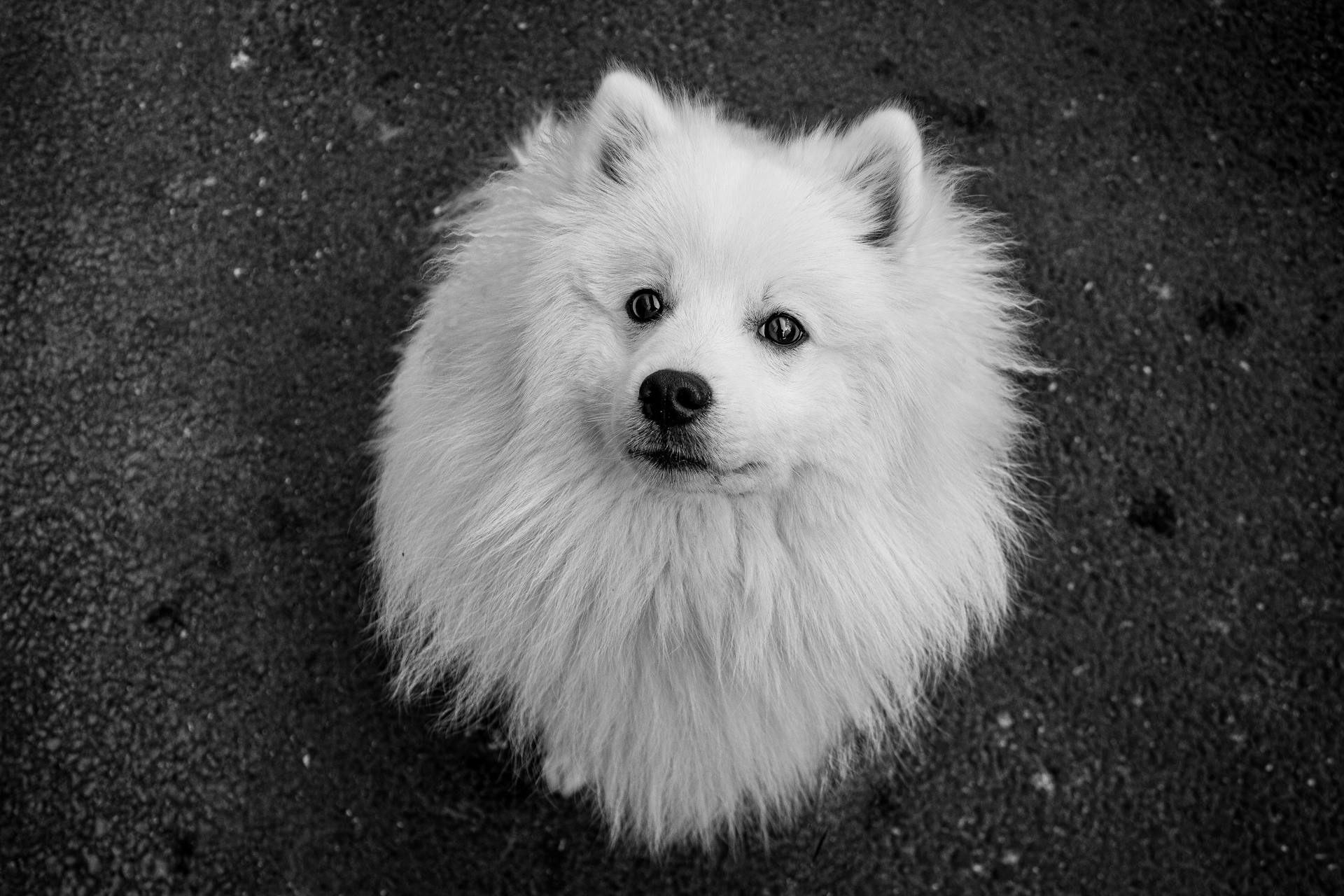
Akitas need at least an hour of daily exercise, which can include a long jog or vigorous play, as well as mental challenges like agility or scent work.
Their thick double coat requires regular brushing, ideally once or twice a week, but may need daily brushing during heavy shedding periods.
Akitas are prone to overheating, so it's essential to keep them cool in hot temperatures. They prefer colder weather and snow, making them a great companion for winter activities.
Their size and energy level mean they require a well-fenced yard to prevent jumping and potential escape.
Regular eye examinations are crucial to detect progressive retinal atrophy, a condition that can affect Akitas.
Akitas can be prone to health issues like gastric dilation volvulus, patellar luxation, and hypothyroidism, so it's essential to monitor their health closely and take preventative measures.
Brushing their teeth regularly and trimming their nails on a regular basis will help keep them clean and healthy.
Curious to learn more? Check out: Are Akitas Good Guard Dogs
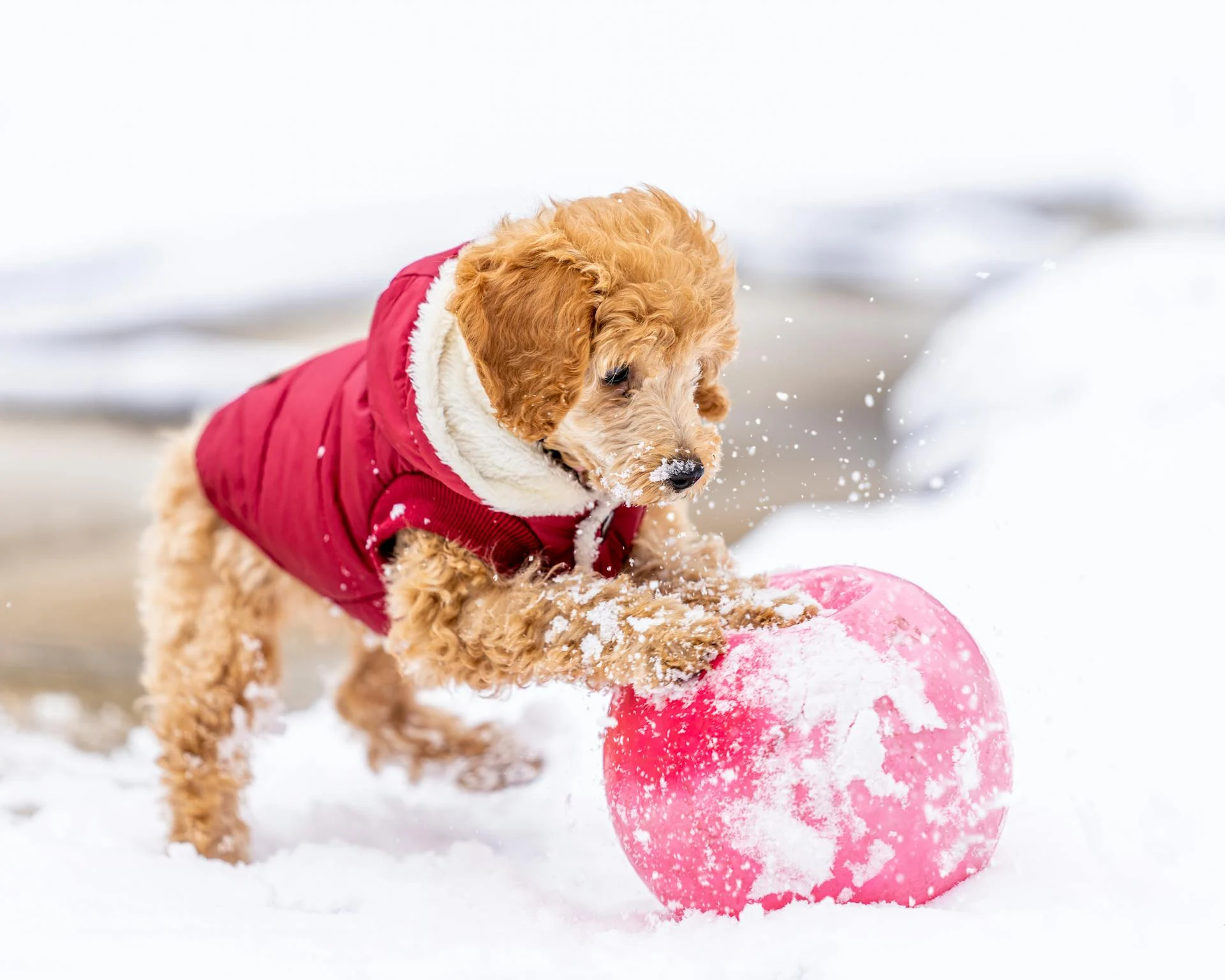
Akitas are intelligent dogs that require consistent training from an early age, and early socialization is vital to prevent them from perceiving strangers as a threat.
A brisk walk or jog once a day should be enough to keep your Akita in good shape, but they also enjoy playing and swimming, so be prepared to get them wet!
Diet and Nutrition
Akita puppies grow rapidly and need a high-quality, low-calorie diet to prevent bone disorders. They require a balanced diet that prevents them from growing too fast.
Feeding them three to five cups of dry food distributed into two meals is a good starting point. This will help them stay healthy and prevent overgrowth.
Make sure your Akita has access to clean, fresh water at all times. This is essential for their overall health and well-being.
Some Akitas can be prone to getting overweight, so monitoring their calorie intake is crucial. Discuss any special needs with your vet to ensure your Akita gets the right amount of food.
Don't forget that Akitas can be food-possessive, so it's best to feed them away from kids or other animals.
Frequently Asked Questions
How much is a red Akita?
The cost of a red Akita can range from $800 to $8,000, depending on the puppy's bloodline and lineage. A red Akita's price may vary, but it's essential to research reputable breeders for a fair and transparent price.
What is the rarest Akita color?
Black Akitas are considered the rarest, featuring a solid black coat with minimal white markings.
Are Akitas dog friendly?
Akitas can be wary of other dogs, but they form strong bonds with family and friends, making them a loyal companion. With proper socialization, Akitas can get along with other dogs, but they may still prioritize their loved ones.
Featured Images: pexels.com
